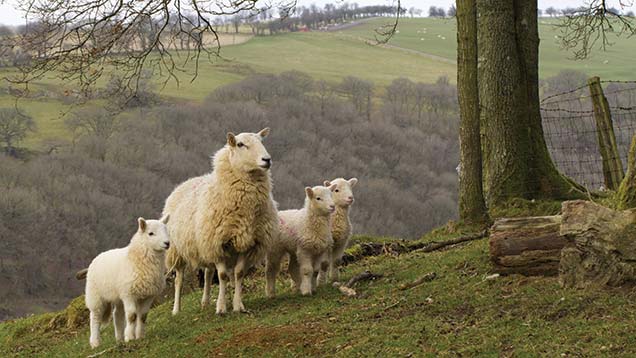Study shows massive gap in performance of flocks
 © Rex
© Rex There is a massive gap in physical performance and output per acre between Welsh ewe flocks, a recent study shows.
The study was carried out on 20 flocks ranging from 100-800 ewes of mixed farming types using Farming Connect’s Comparative Farm Profit template.
One of the most striking findings was the correlation between lamb growth rates and weaning.
Differences ranged from 170g/day to just over 300g/day with highest growth rates associated with weaning at 12 weeks of age rather than leaving lambs with ewes until 14 to 16 weeks of age.
Independent sheep expert Catherine Nakielny who carried out the work on-behalf of Farming Connect explains that optimising age at weaning is an area that many flocks could look at. “There is increasing evidence that lamb growth rate actually drops before weaning and identifying ways in which this reduction can be avoided is required,” says Dr Nakielny.
The flocks with the lowest growth rates tended to have the highest loss rate. Overall there was a 16% variation between lamb losses. While some flocks managed to keep losses down to 7%, others saw losses of up to 23%.
Dr Nakielny says there was no definite link between scanning results and lamb loss rate, so while higher scanning results are generally likely to lead to high loss rates it is possible to manage lamb losses.
Interestingly, the flocks with the poorest loss rates and growth rates also had the lowest output per acre. There was a sevenfold difference in output of meat per acre, with the highest to lowest varying by 302kg (see graphs below).
As you would expect higher stocking rates led to higher output per acre. While output is largely driven by land-type and grass availability the study shows there is room for most flocks to improve in many areas of physical performance, says Dr Nakielny.
“Not every farm can or will want to increase their scanning percentage. But every farmer can reduce the difference from what they lamb to what they sell. However, until you have a good understanding of the performance of the flock then you can’t work out what your next step is.“
Questions and answers
How can farmers reduce their lamb losses?
At each point in the production cycle, targets for maximum lamb loss rates should be set based on current level of performance, farm and breed type. Targets can be set in-conjunction with the farms’ own vet, as part of the flock health planning process. Continually monitoring losses against these targets can help identify any changes to nutrition, management and health that might be required. Furthermore the cost-benefit of any changes can be considered in order that the financial performance of the flock is also improved.
When should lambs be weaned for optimum growth?
Peak milk production occurs when lambs are three to four weeks of age and will become less important to the diet of lambs when they are eight weeks old. Many producers are finding that weaning at 12 weeks is the optimum age and early weaning can actually be especially useful in a season with poor grass availability. Weighing at least a proportion of lambs at or around the point of weaning can really help with understanding flock performance and whether there could be any constraints on lamb growth.
How can farmers improve their output?
Improvements in output should be focused on financial performance and the first step is to know the profitability (or not) of the current system. Tools such as the Comparative Farm Profit template can be a useful starting point as it looks at both physical and financial performance of the flock and this is broken down into a number of key categories.
Changes in output should also be considered against any additional inputs required. In some cases increased investment is justifiable provided a sufficient cost-benefit can be established. For some businesses, improvements in output can be driven by reducing wastage such as ewe and lamb losses and lamb growth rates while for others a more fundamental change might be required. The results derived from the template demonstrates the importance of stocking rate on flock output. Making the most of the land available to the business is therefore vital. For some flocks this could be one ewe to the acre (or lower) and for others this could be up to six ewes to the acre (or higher).
A copy of the template can be found on the Farming Connect website at http://www.menterabusnes.co.uk/farmingconnect/comparable-farm-profit-template and the bulletins at http://www.menterabusnes.co.uk/farmingconnect/know-your-flock.
